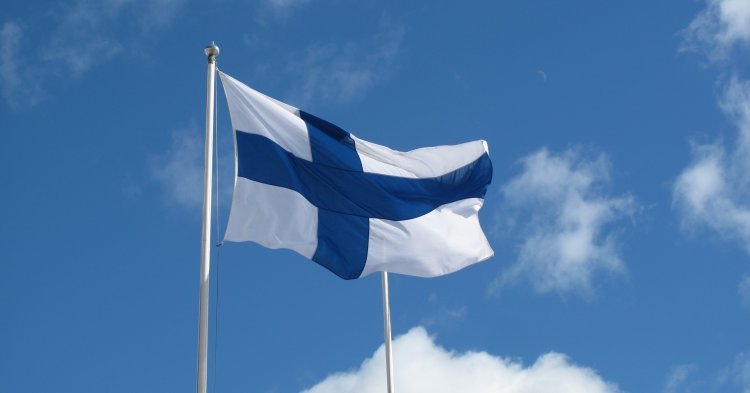Tough night for the governing Centre Party
The Social Democrats won 40 seats in the 200-seat Finnish legislature but the Finns Party, at 39 seats, came closer than what was expected before election day. The Finns Party’s support soared in the days before the election, while some were left unsatisfied with the Social Democrat leader Antti Rinne’s performance in the televised election debates. The first results at 8pm put the Finns Party fourth but the nationalist result improved as the vote count progressed to ballots cast on election day proper.
Of the coalition partners in the previous government, only the centre-right National Coalition held out, gaining one seat compared to 2015 and coming in third with a tally of 38. The Blue Reform party, born as a breakaway group after a 2017 Finns Party turn towards the extreme-right, was entirely wiped out of the Parliament despite holding five ministerial posts at the end of the previous government. Prime Minister Juha Sipilä’s Centre Party was still the biggest loser, haemorrhaging 18 of its original 49 seats.
Key themes: social policy, immigration and climate
The EU barely featured directly in the public debate ahead of the election. Instead, scandals concerning the inadequate treatment of elderly residents in care homes were one recent factor in the Social Democrats’ rise, while the austerity measures implemented by the previous government were overall regarded as the main reason for the Centre Party’s downfall.
The Finns Party rather focused on its anti-immigration agenda than on the Euroscepticism that first brought the party to fame in 2011. However, they remained the only party that took a squarely negative position on immigration. The Greens’ rallying cry was to make 2019 “a climate election”, and the party did record its best result in history, winning a total of 20 seats. Campaigning on a similar anti-austerity, liberal platform, the Left Alliance celebrated the first time since 1995 that it gained seats compared to the previous election, coming in sixth with 16 seats.
A progressive-led coalition ahead
Already before the election, it was clear that the Social Democrats would scarcely form a coalition with the far-right Finns Party. To win a stable majority, the Social Democrats will need the support of either the centre-right National Coalition, or the Centre Party which mainly derives its support from rural areas.
After a tight election where a vote share of a mere 17.7% was enough to win, the coalition negotiations aren’t expected to be easy. Few things are certain yet but having taken a battering, the Centre Party is rather more inclined to go into the opposition than to stay in government. At the same time, however, the National Coalition and the trade unionist Antti Rinne may struggle to find common ground on budgetary and economic matters. In any event, the Social Democrats are likely to also call on the support of at least two parties from among the Greens, the Left Alliance and the liberal Swedish People’s Party.
The Social Democrats, the National Coalition and the three medium-size parties mentioned above can all be called various degrees of progressive and pro-European. Though the negotiations may be difficult, there will be political will to form a government as rapidly as possible ahead of the Finnish EU presidency starting in July. Even if the nationalists came in second, the Finnish elections yielded a satisfying result for pro-European souls.
What impact on Finnish EU policy?
After the 2015 elections, the Centre Party and the National Coalition had to make certain concessions to the Finns Party. Concerning EU policy, a famous example of this was the confusing September 2015 Finnish abstention on the relocation of refugees. The National Coalition’s Petteri Orpo, as interior minister, promised that Finland would meet its own quota on a voluntary basis, but because the Finns Party opposed mandatory EU quotas, Finland nevertheless abstained in the vote in the EU Council.
This time, the government is shorn of Eurosceptics and may be more coherent on the grand principles. A coherent stance on Europe should make for an orderly EU presidency in the second half of 2019. From individual policy areas, climate action is a high priority for the Greens and the Left Alliance, which may well be reflected in Finnish EU policy in the upcoming years.
By convention, the biggest party in the Finnish Parliament gets to nominate the next Finnish EU Commissioner. Jyrki Katainen, the current Finnish Commissioner, comes from the centre-right National Coalition, and Finland hasn’t had a Social Democrat Commissioner since Erkki Liikanen in 1995–2004. Since Alexander Stubb lost the EPP primaries to Manfred Weber, there has been little speculation on the next Finnish Commissioner. Social Democrat names that may come up in Commission speculations include the former Minister of Finance Jutta Urpilainen, and Miapetra Kumpula-Natri, the MEP who acted as the rapporteur on the famous ‘end of roaming’ legislation.





Follow the comments: |
|
